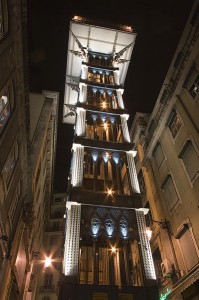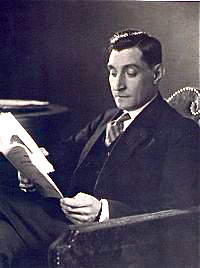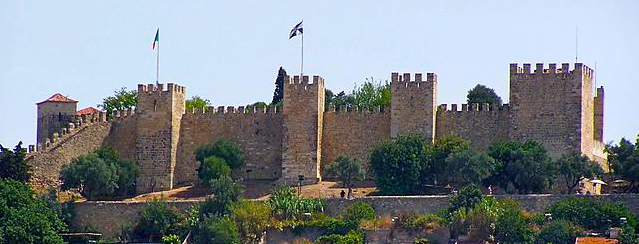“Look at them…Gather ye rosebuds while ye may and all that. It’s the end of Europe, and that’s why they’re dancing, and of course Lisbon is the end of Europe, too. The fingertip of Europe. And everything that Europe is and means is pressed into that fingertip. Too much of it. It’s a cistern full to overflowing…”
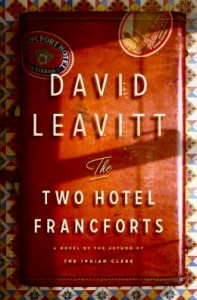 Lisbon, 1940, provides a temporary safe haven and hope for emigrating citizens from every country in Europe as they try to secure visas for passage by ship – any ship – out of Europe and away from the Nazis. For Americans with valid passports, life is more secure. The U.S. government has commandeered the S. S. Manhattan to transport stranded Americans in Lisbon back to New York. For these people, the biggest challenge is to pass the time till the ship sails, and many of them do it in extravagant fashion. A few, however, including characters here, have more difficulty leaving Europe, physically and emotionally, than one might expect. As one character notes, in retrospect, “Now it seems churlish to speak of our plight, which was nothing compared with that of real refugees – the Europeans, the Jews, the European Jews. Yet at the time, we were too worried about what we were losing to care about those who were losing more.” Author David Leavitt, in describing life in Lisbon in these crucial weeks before war engulfs all of Europe, examines four characters – three of them Americans awaiting the S. S. Manhattan – as they reveal their attitudes toward Europe, toward the United States, and ultimately toward each other.
Lisbon, 1940, provides a temporary safe haven and hope for emigrating citizens from every country in Europe as they try to secure visas for passage by ship – any ship – out of Europe and away from the Nazis. For Americans with valid passports, life is more secure. The U.S. government has commandeered the S. S. Manhattan to transport stranded Americans in Lisbon back to New York. For these people, the biggest challenge is to pass the time till the ship sails, and many of them do it in extravagant fashion. A few, however, including characters here, have more difficulty leaving Europe, physically and emotionally, than one might expect. As one character notes, in retrospect, “Now it seems churlish to speak of our plight, which was nothing compared with that of real refugees – the Europeans, the Jews, the European Jews. Yet at the time, we were too worried about what we were losing to care about those who were losing more.” Author David Leavitt, in describing life in Lisbon in these crucial weeks before war engulfs all of Europe, examines four characters – three of them Americans awaiting the S. S. Manhattan – as they reveal their attitudes toward Europe, toward the United States, and ultimately toward each other.
By using Lisbon primarily as an incidental setting for the characters’ lives, and not as the main focus of the novel, Leavitt provides an unusual vantage point from which to approach the horrors of the war and its psychological effects on those trying to escape it. Two couples, Pete and Julia Winters, and Edward and Iris Freleng, meet for the first time at the Café Suica, when (in a symbolic moment) Edward Freleng inadvertently crushes Pete’s eyeglasses as they fall to the pavement. The couples, both in their early forties, become friendly, though superficially they have little in common. Pete, from Indianapolis, has been working most of his life as a car salesman, while his Jewish wife Julia, from New York, has dreamed all her life of having an apartment in Paris, a goal which the two have recently achieved.
Edward and his British wife Iris come from more privileged backgrounds, with Edward admitting that he has “never had a job in [his] life.” He and Iris have lived in dozens of hotels and resorts all over Europe and write mystery novels for fun under the name of Xavier Legrand.
The differences between the couples are further emphasized through their different addresses in Lisbon. While Pete and Julia are lucky to have found a hotel room at all, at the Francfort Hotel near the Café Suica, Edward and Iris are staying at the similarly named Hotel Francfort, a different, more elegant hotel near the Santa Justa Elevator, which allows people on the street to travel from ground level to the much higher levels of the hillside without the effort of climbing on foot, the Elevator also symbolizing the differences between the two couples themselves.
The two couples have far more in common in their secret lives than they do in the superficial lives which initially bring them together. Before fifteen pages have elapsed, Edward is flirting with Pete, and Pete is not discouraging him. The women, too, have secrets which are revealed in the course o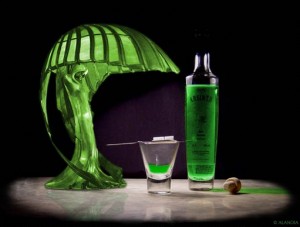 f the novel, and as the time for the departure of the Manhattan gets closer, their behavior becomes more and more frantic, with Julia insisting that she cannot possibly return to New York, and Iris manipulating Pete and Edward in order to maintain her own sanity and her own sense of power. The women and men go in different directions for much of the novel, enjoying many hours of independence from each other, with their activities often fueled, in the case of Pete and Edward, by absinthe, “the green fairy.” Julia continues to play games of solitaire throughout the novel, Iris continues to play power games, and the tensions within all the relationships get closer to the breaking point.
f the novel, and as the time for the departure of the Manhattan gets closer, their behavior becomes more and more frantic, with Julia insisting that she cannot possibly return to New York, and Iris manipulating Pete and Edward in order to maintain her own sanity and her own sense of power. The women and men go in different directions for much of the novel, enjoying many hours of independence from each other, with their activities often fueled, in the case of Pete and Edward, by absinthe, “the green fairy.” Julia continues to play games of solitaire throughout the novel, Iris continues to play power games, and the tensions within all the relationships get closer to the breaking point.
While the characters are developing, the author also includes a few of their observations of life around them, adding to the picture of life in Lisbon during the emergency. Refugees sleep on the beach and in chairs in hotels, if they are lucky. A shortage of food supplies in Lisbon and throughout Europe brings volunteer church groups from the US to try to help. For wealthy refugees, obtaining a car and a driver’s license has become almost impossible, a “hardship” for them in their boredom as they await their ship, and one Jewish couple whom Pete and Julia know has been unable to get a visa to the United States, Argentina, Brazil, Mexico, or Cuba, though they might get one from Cambodia, “for a price.” Particularly poignant is Pete’s witnessing of the beating of two eight-year-old children, each one wearing only one shoe, by the police of Antonio de Oliveira Salazar’s regime. Salazar has proclaimed that everyone in Lisbon must wear shoes because he believes that this shoe policy will “bring the country up to snuff for Lisbon’s Exposition [of 1940]” which he hopes will rival the 1939 World’s Fair in New York. The boys’ poor family can afford only one pair of shoes for two children.
Intriguing in its focus, the novel maintains its pace and keeps the reader entertained and interested throughout, despite the fact that the characters are not as fully developed as one might wish for. The insights into their characters are based primarily on their superficial, outward behavior and upon secrets from the past which are sometimes withheld until the conclusion, preventing the reader from fully understanding the characters and their motivations as the novel unfolds. None of the characters can be considered “heroes” by any standards, nor are they in any way admirable. Obvious symbols abound – from the title and the Elevator to Julia’s constant playing of solitaire, the depiction of the Winters’s apartment in Vogue magazine, and the meeting between Pete and Edward at the crumbling Castelo de Sao Jorge, with its ubiquitous peacocks. The conclusion, a tour de force, with its commentary on the writing process itself, will intrigue (and perhaps amuse) lovers of literary fiction. All in all, Leavitt creates an unusual treatment of a tension-filled time and place with characters whom he manipulates effectively to illustrate his themes. Ultimately, “there are occasions when none of the choices are good. You simply have to calculate which is the least bad.”
Photos, in order: The author’s photo is from http://www.nndb.com/
The Santa Justa Elevator, by Luca Galuzzi, may be found on http://en.wikipedia.org
Absinthe, “the green fairy,” is depicted here: http://www.alandia.de/
The photo of Antonio de Oliveira Salazar, leader of Portugal, is from http://en.wikipedia.org
The peacock from the medieval Castelo de Sao Jorge in Lisbon is shown on http://www.thenyloncarryall.com, part of an article by Katy Scrogin.
The medieval Castelo de Sao Jorge, which was crumbling in 1940, when the novel takes place, has been restored in recent years. http://en.wikipedia.org/
ARC: Bloomsbury

